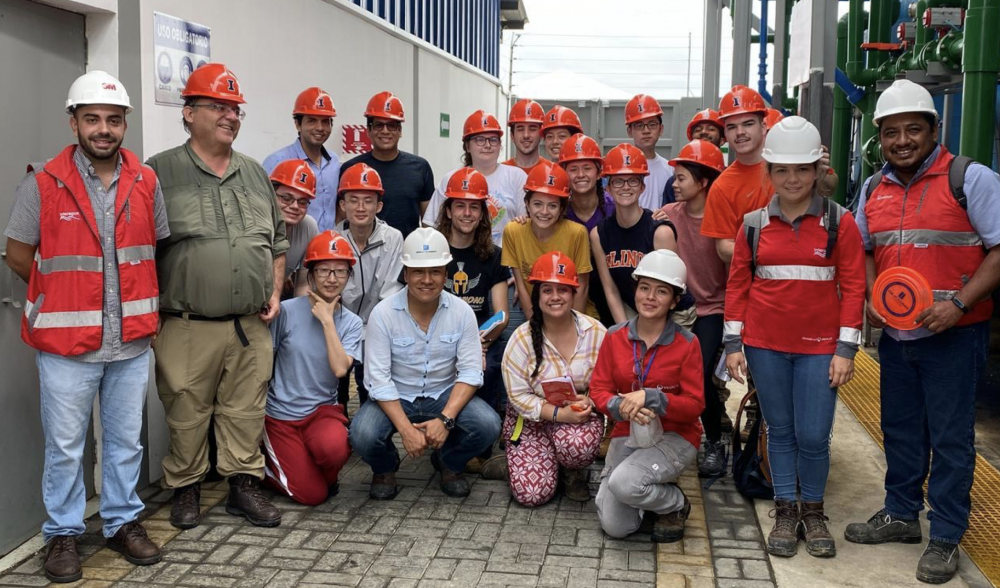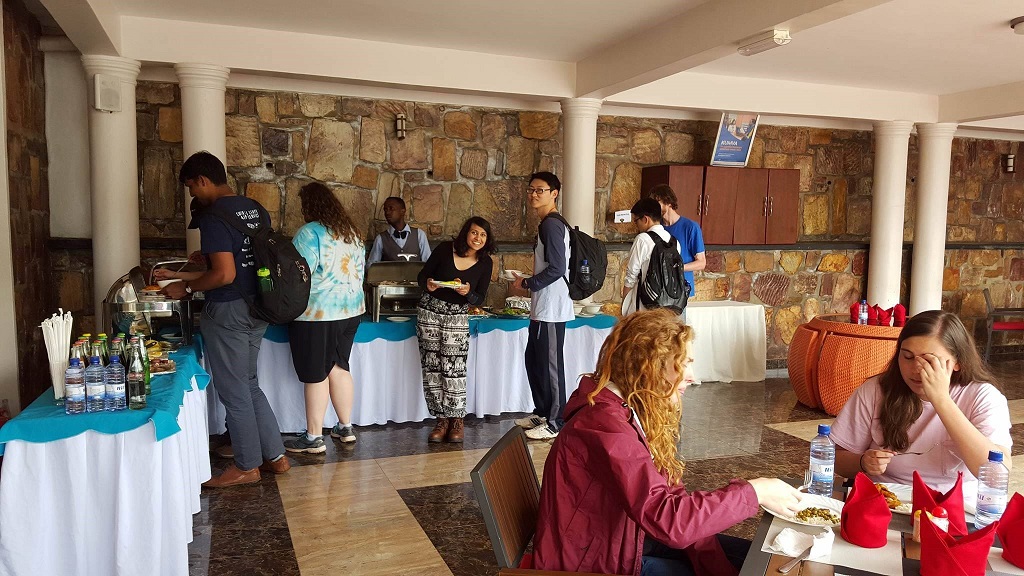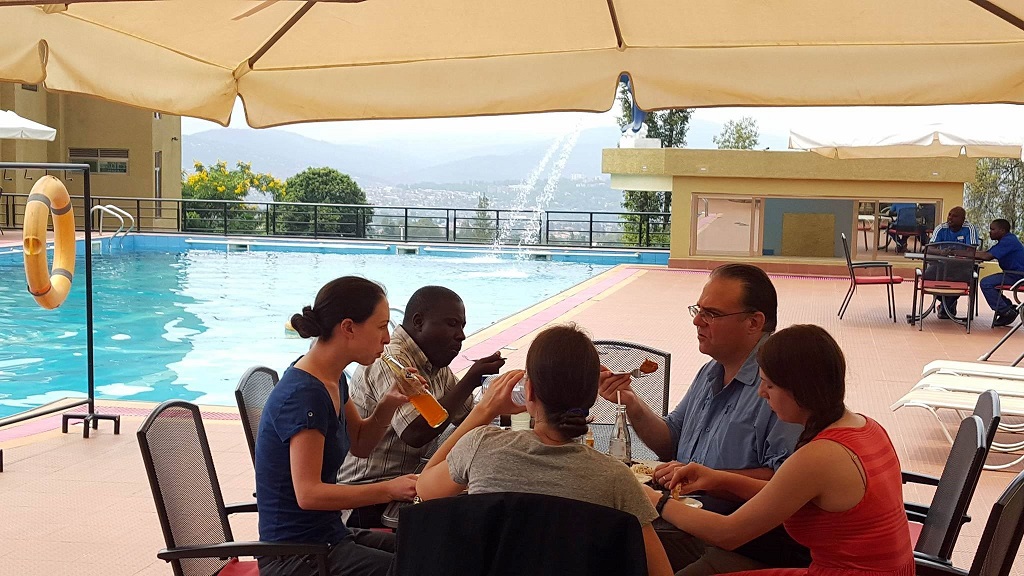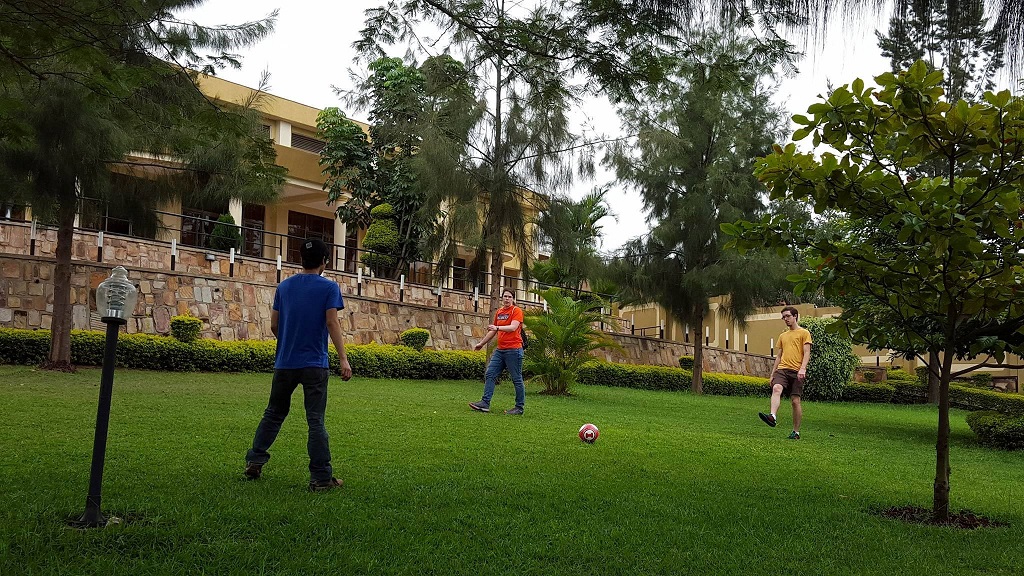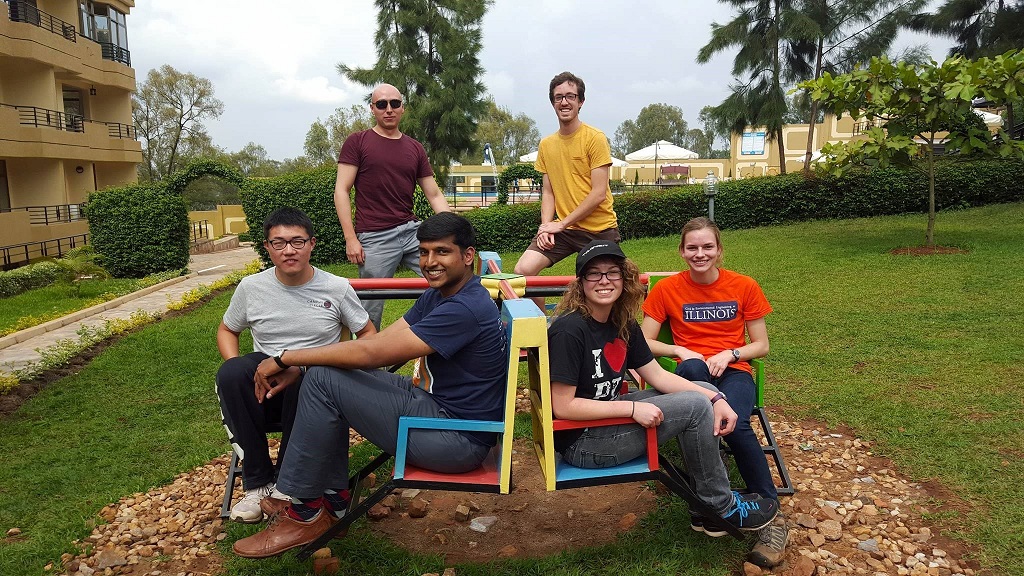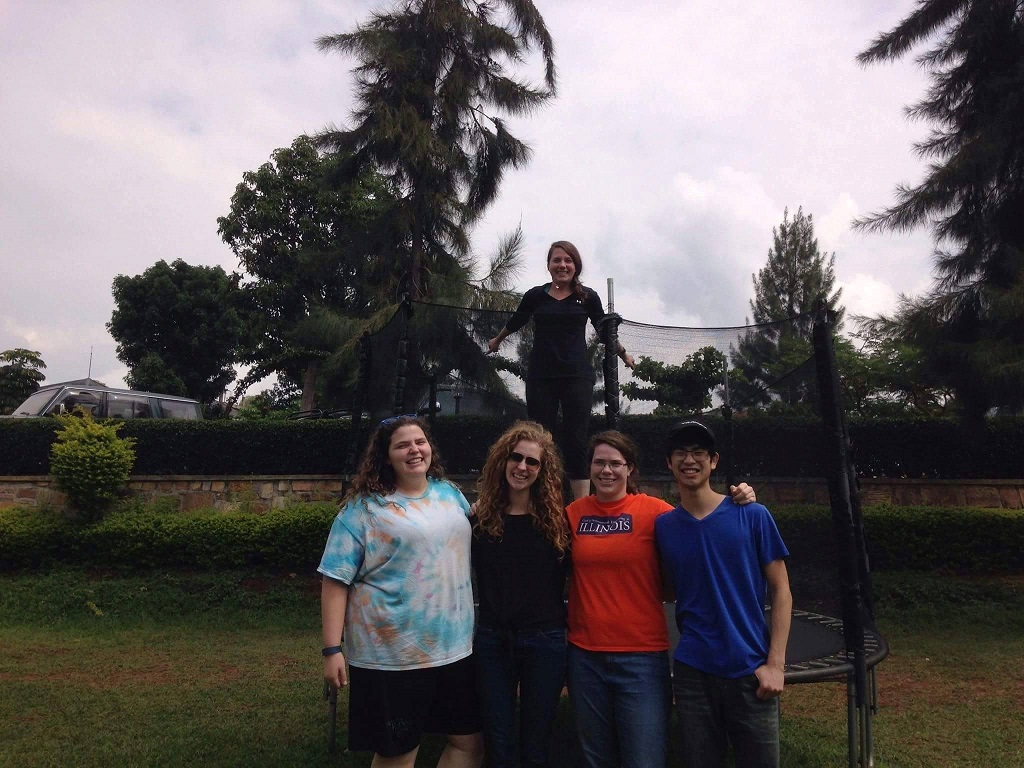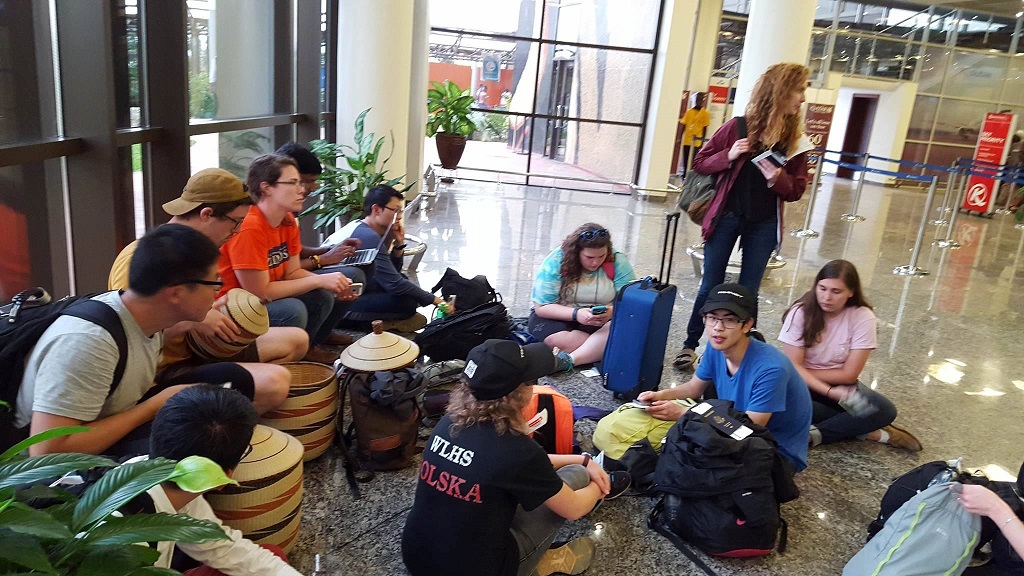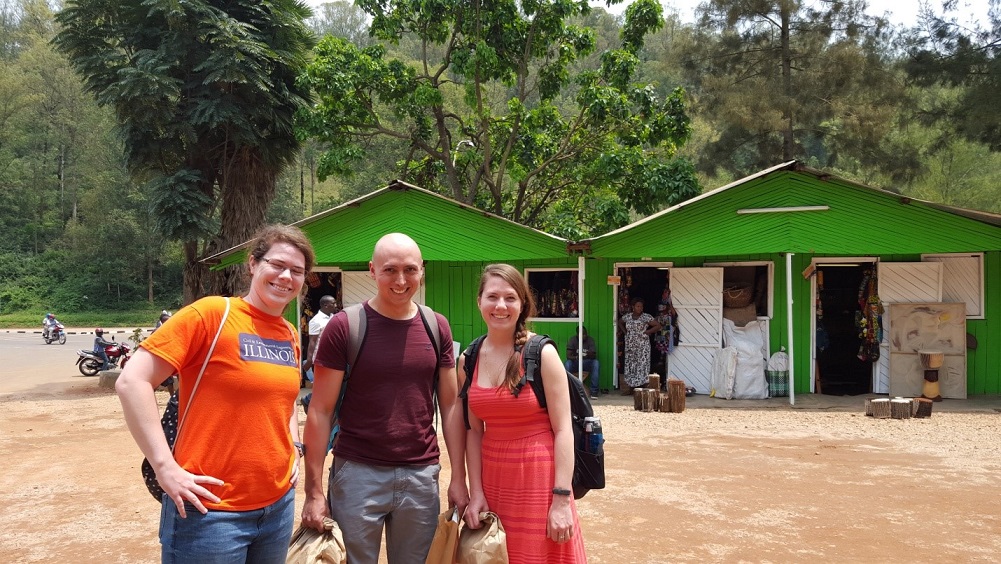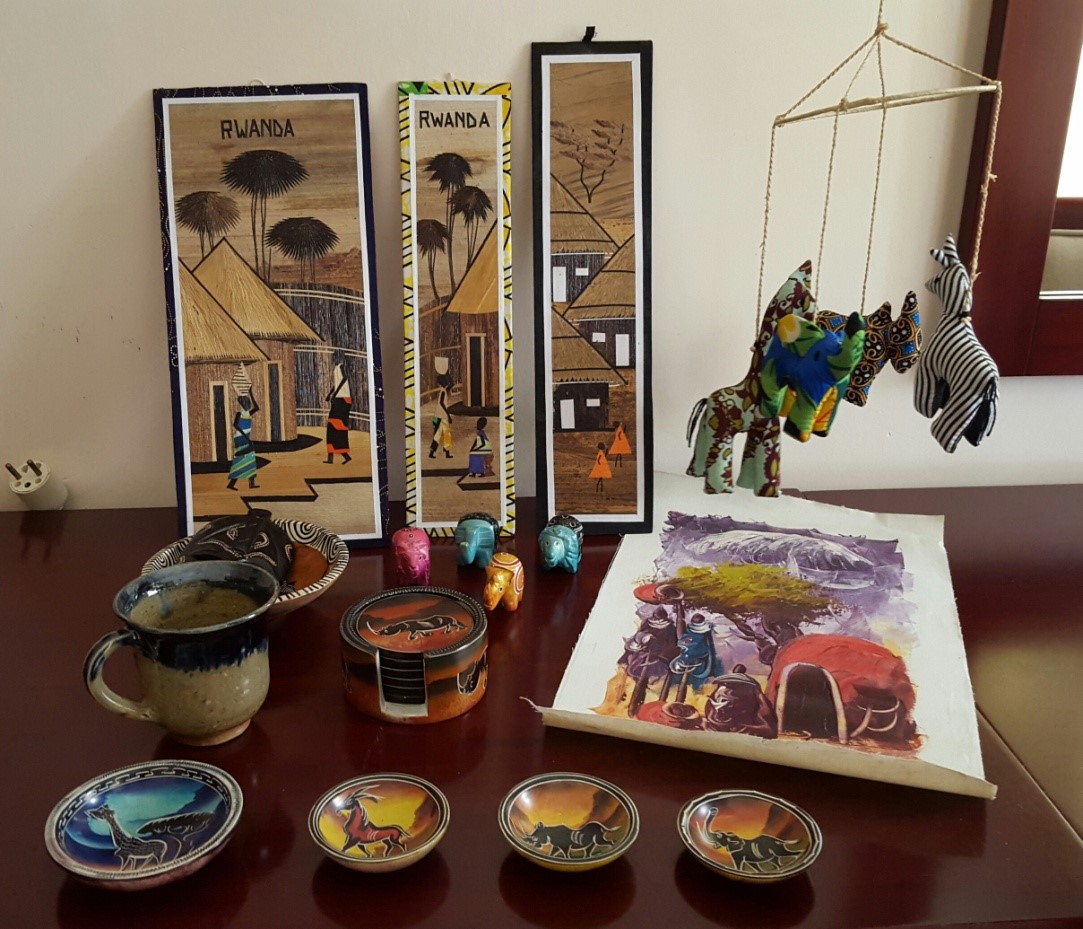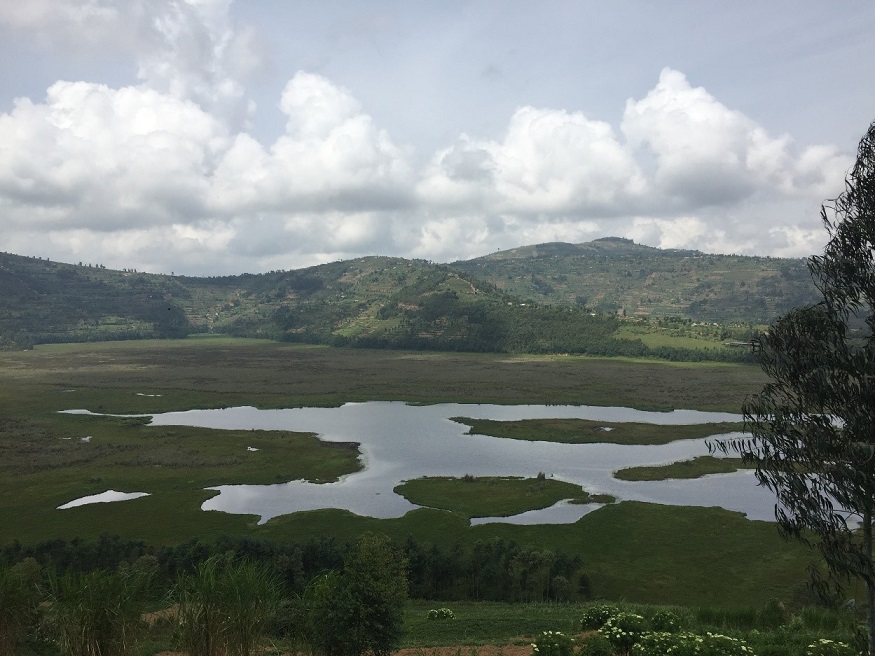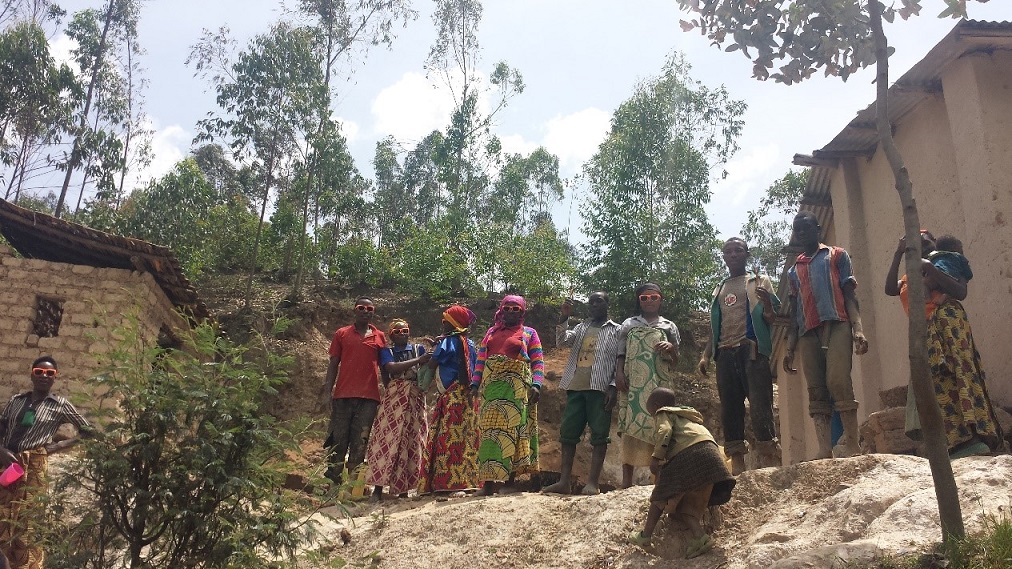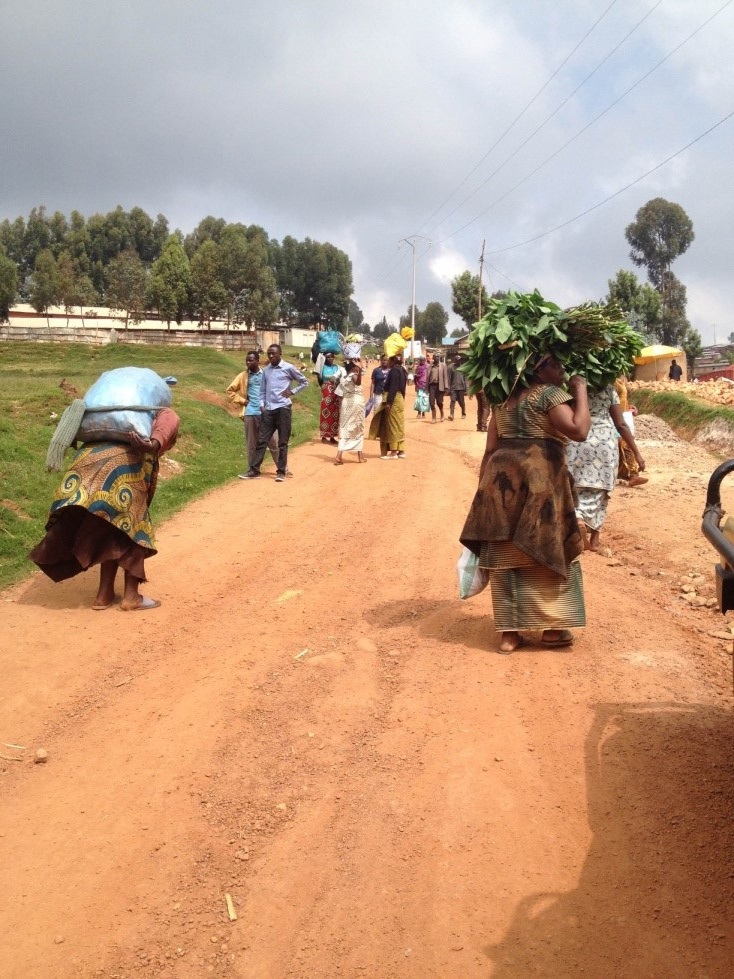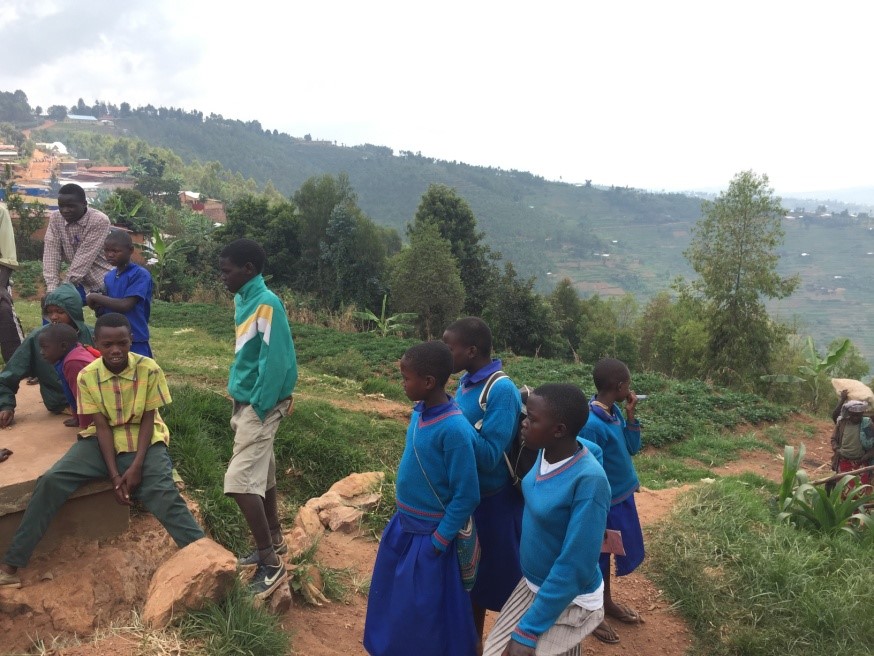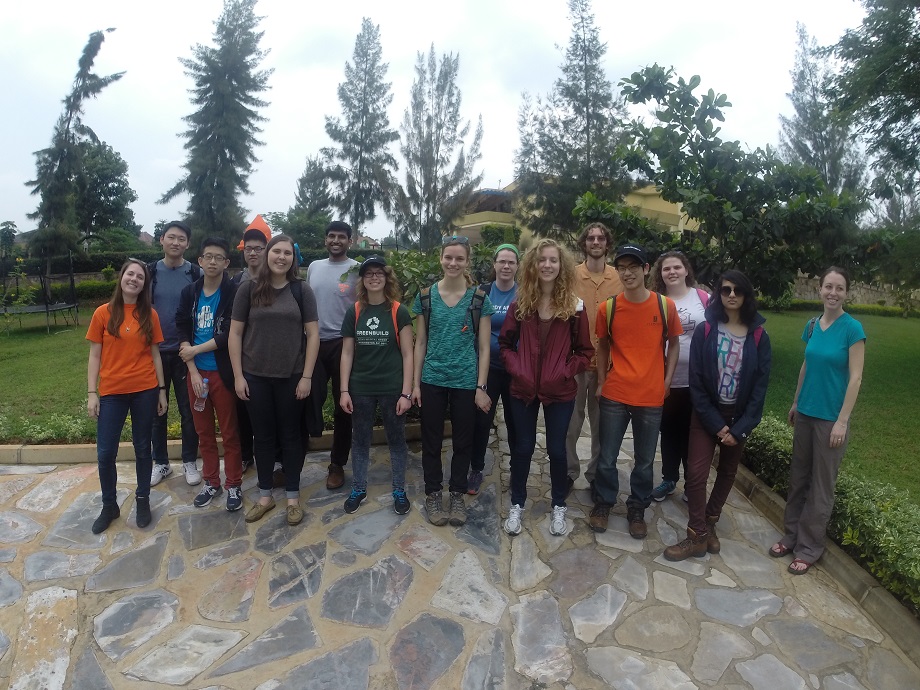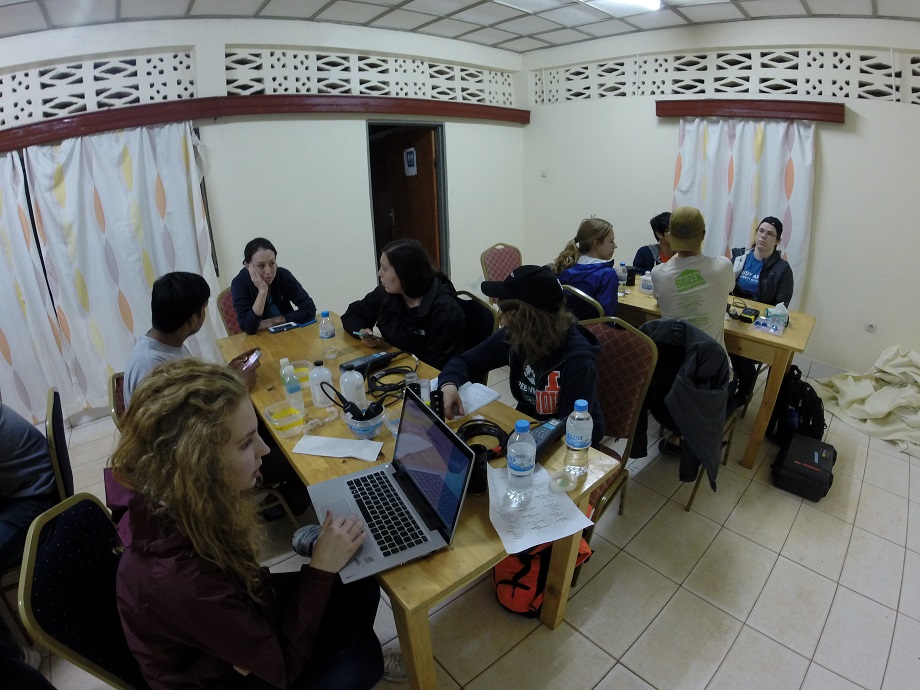Monday, February 15, 2016 (by Amanda Caldwell-Jacques)
This morning was my roommate’s 22nd birthday, so of course we woke up to Taylor Swift’s “22”! After a delicious buffet breakfast at our hotel, we waited for our instructors to finalize the day’s plans while several of us played soccer together. Below you can see Bernardo, our MVP, playing with all of us. We spent some time rehearsing our demonstrations for the school children we would later visit, and headed out to begin our first field day.

The drive to the Byumba community took about 20 minutes. Along the way, we saw acres and acres of crops of tea. All the children we passed excitedly waved and us stranger. Many women were working on the side of the roads to clean the “gutters.” I am very surprised at the infrastructure of the communities, especially the road conditions. The Rwandans are also especially skilled at carrying things on their heads. I am entirely convinced if I even attempted to do it as they do, I would fail miserably.
We arrived at our first water source to collect samples. When we pulled up, a 20,000L UNHCR water truck was on site collecting water for the Gihembe Refugee Camp. Three trucks are run daily to provide water to the refugee camp. We were told the water came from the rocks in the mountains.

Hannah, the birthday girl, is testing the water for fluoride.
As we began testing the water samples with our probes, some of us stared discussions with women that were collecting water. Personally, I spoke with (working with one of our awesome translators) a beautiful and sharing women named Beatrice. She typically collects her water from another source, but stops here when she is passing by. It typically takes her one hour each way to collect her water in a 20L jug. She was aware of problems associated with contaminated water, and used a disinfectant called Curo to treat it. But, the Curo gives the water a poor taste. She said she is excitedly waiting for regular access to safe water.
While talking to Beatrice, a women named Clementine introduced herself to us. She was incredibly welcoming and kind, allowing many of us to climb up to her home. She showed me her sweet potato field. Her husband had recently been to the hospital for malaria. She does not have soap because it is too expensive, and she had not been educated about water treatment.

On our way to Clementine’s house
After leaving Clementine’s, we ate lunch back at the hotel and left to stop by a government office, Umurenge Wa Kageyo. While Peter Luswata and others discussed with officials, Daniel and I gave some kids in the street a soccer ball, and got to play with them. They were incredibly happy and friendly!
Next, we headed to the school – Muhondo. There, they collected water via 50,000L containers connected to the roofs. Just like all the other children we have met, the school children were so friendly and continuously waved to us. Some of our students gave a demonstration using tonic water, bottled water, and a black light to explain water disinfection. When the tonic water is treated with WaterGuard, it turns the same color at the bottled water when the black light is shined on it. The students in the class responded to the demonstration with intelligent questions and a better understanding of unsafe water.

Allie used a Polaroid camera, and the children were incredibly excited to see their group picture.
Our last stop of the day was a health clinic, where a doctor (Josephine) spent a lot of time teaching us about their work and the health concerns of the community. She told us 30-40 people visit the clinic daily, mostly seeking treatment for pneumonia, diarrhea, and malaria.
Upon our return to our hotel for the evening, our lab work began. Students used the digital titraters to test for total hardness, calcium hardness, and alkalinity. Others tested for chlorine, bromide, and other chemicals in the collected samples.

At dinner, the group celebrated Hannah’s birthday with a flaming mound of cupcakes. The “candles” reminded me of large sparklers from the 4th of July. After finishing in the lab, we headed to rest up for another exciting day in the field.

